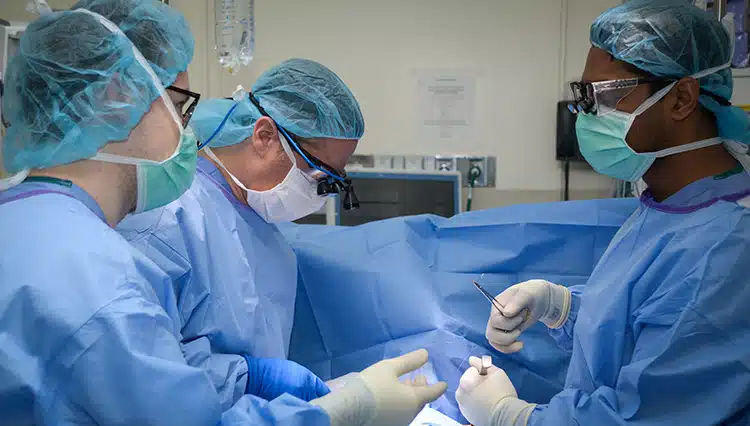Devices and technologies can help patients and caregivers track seizures, and send an alert to caregivers when a seizure happens. These tools also help track medications and potential seizure triggers.
This webinar features Dr. Robert Fisher, who discusses the newest devices and technologies are in development. Dr. Fisher is the Maslah Saul MD Professor and Director of the Stanford Epilepsy Center and EEG lab. He has published over 200 peer-reviewed articles and three books, and he has received numerous awards for his work nationally and internationally. In addition, he is a past president of the American Epilepsy Society.
His recent research is on new devices to detect and treat seizures. Dr. Fisher has won many teaching awards and also has an active clinical practice at the Stanford Epilepsy Clinic.
Q&A Transcript
Do all devices have to undergo FDA approval? Why does the process seem to be much longer in the US than in other nations?
The FDA classifies devices as type I, II, or III. Type I, like a tongue depressor or a bedpan, do not have to go through approval processes. Type II are items with some risk. Type III is high risk. An implanted brain device would be in the type III category, and therefore require pretty extensive evidence of safety and efficacy in medical trials. It probably does take the FDA longer to approve drugs and devices than it takes agencies in other countries. I can’t speak really for the FDA, I can only say that they require a device to be safe, effective, and have a clinically meaningful benefit. I think all of the devices that I spoke about today have potential, but I can’t promise that all of them will be approved. I can never really speak from the FDA’s timeline.
Are there any studies going on to determine if wearable devices will ever be able to predict non-convulsive seizures?
I think wearable devices will be able to predict non-convulsive seizures. We’re looking for good ideas and good strategies on that, and we can take advantage of tailoring an intelligent device to a person’s particular seizure type. Let’s imagine, for example, that someone has a complex partial seizures (and I apologize for the name change. The seizure name just changed this year, so that’s also a focal impaired awareness seizure) and the person might always say, “Help me, help me, help me,” or some other stock phrase at the start of a seizure. We could tailor a device to recognize that behavior at the start of the seizure.
Prediction is a little bit harder. That mostly seems to be based on EEG, though some studies say measuring brain blood flow can be used for prediction. We’re still looking for a way to have wearable, non-invasive predictive devices. I think we can probably do it with invasive and maybe we can do in non-invasive.
Are there any statistics on how predictive wearable devices have the potential to be or is that information really not available yet?
By wearable devices, we’re currently talking about shake detector watches or the shake detector Brain Sentinel EMG. Sentinel device had pretty good sensitivity for picking up seizures. The watches usually have pretty good sensitivity, meaning they pick up the shaking, but they also pick up a large number of non-seizure events, for example, brushing your teeth. Devices therefore need a cancel button, so that a false alarm can be prevented. If you use the cancel function, then both the sensitivity and the specificity of these devices in small studies can be above 75 to 80%. Now, large studies like the EpiWatch Apple study will give us the more definitive answer to the question you asked.
The information contained herein is provided for general information only and does not offer medical advice or recommendations. Individuals should not rely on this information as a substitute for consultations with qualified healthcare professionals who are familiar with individual medical conditions and needs. CURE Epilepsy strongly recommends that care and treatment decisions related to epilepsy and any other medical condition be made in consultation with a patient’s physician or other qualified healthcare professionals who are familiar with the individual’s specific health situation.









